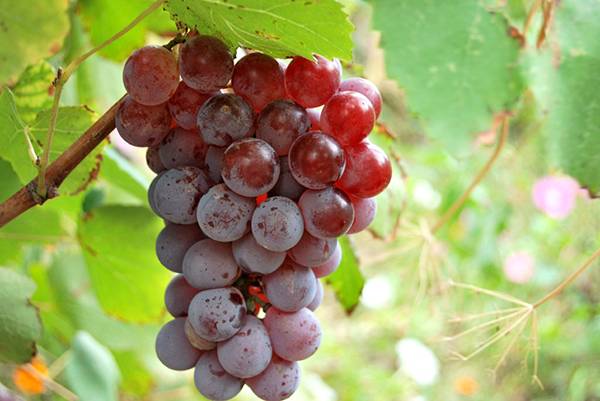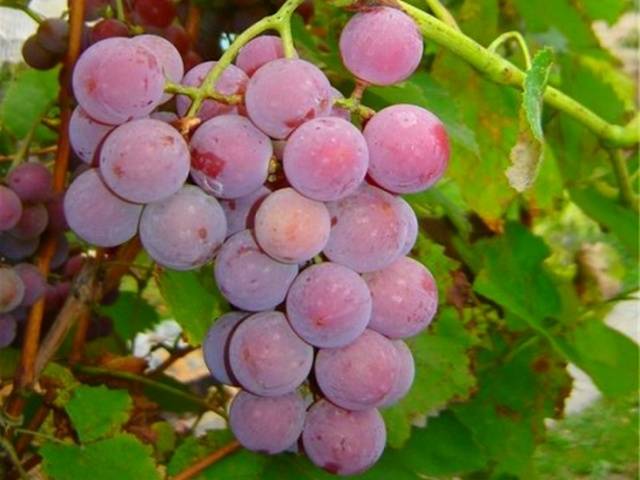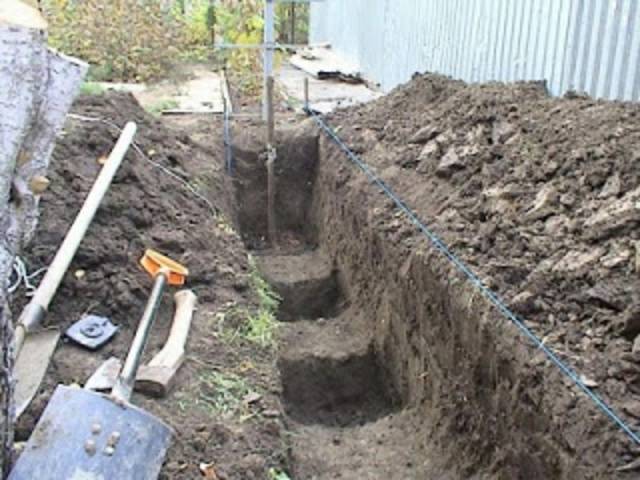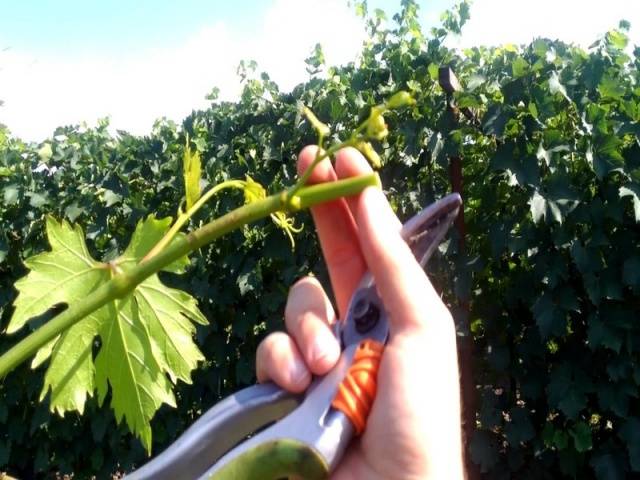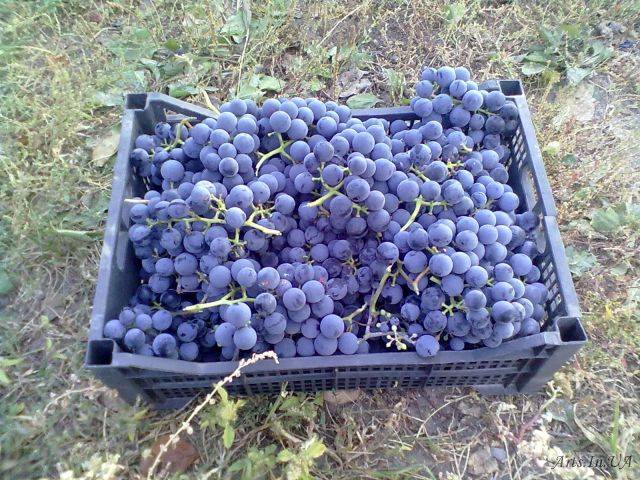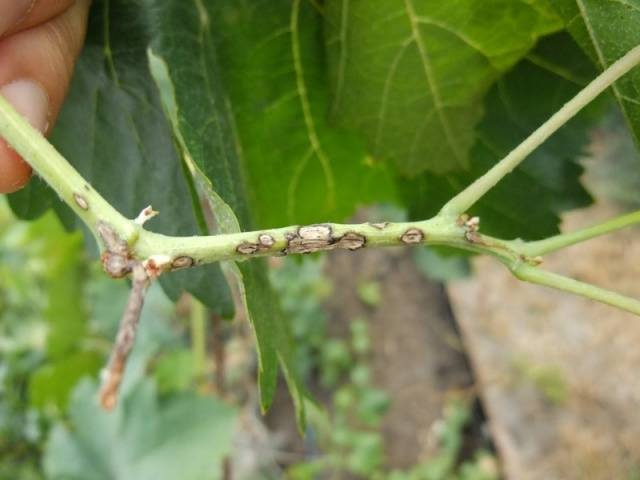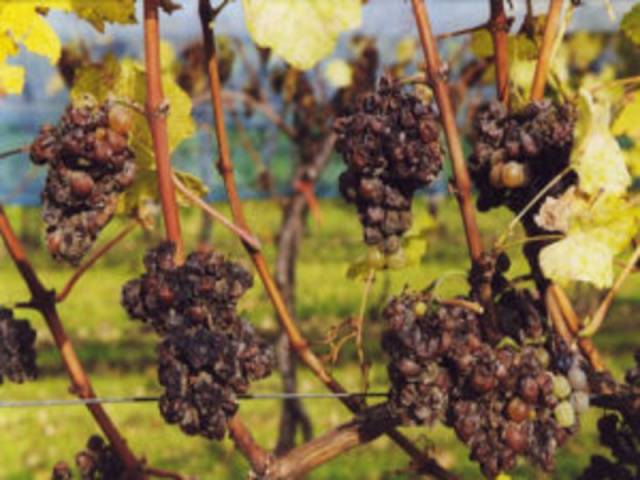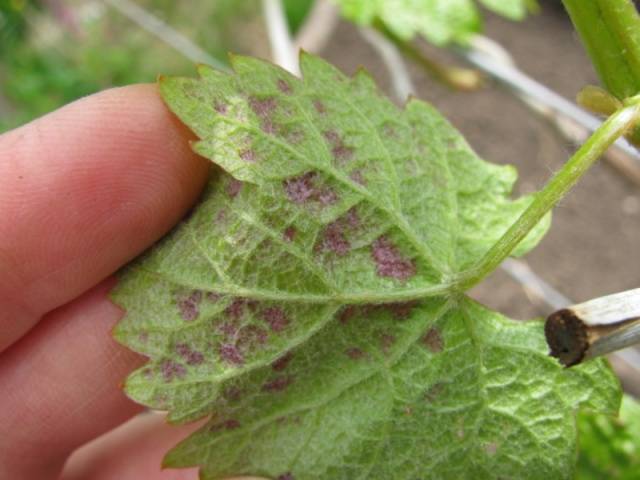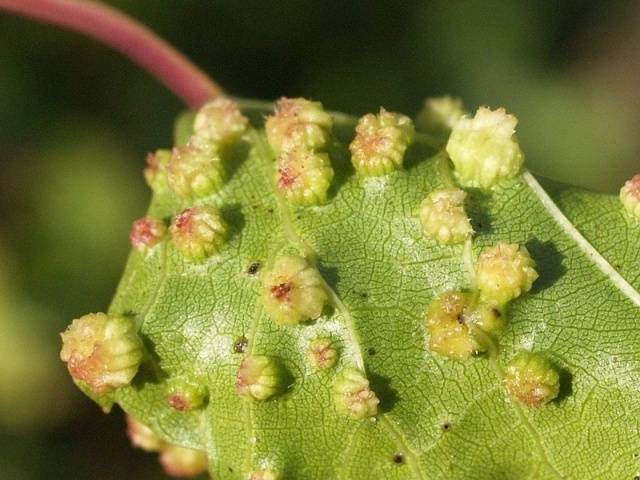Content
Grapes are an exquisite fall delicacy. And delicious homemade grape wine cannot even be compared to store brands. The ability to grow separately table and technical grapes is considered by many to be a luxury. An excellent solution to the issue is grape varieties that are suitable for both food and wine making.
Lydia is an American grape variety. The Lydia grape is a hybrid that belongs to the Isabella group of varieties. Unlike Isabella, Lydia grapes are considered not only a technical variety, but also a table one. Winegrowers sometimes call this grape differently - Lydia pink, Isabella pink. The bunches are usually tied in medium size and gain weight up to 120 g.
Description of the variety
The oval / round berries are distinguished by their red color and high sugar content - about 19%. The grapes are covered with a natural waxy coating, which gives the berries a purple hue (as shown). The Lydia variety has a peculiar taste, with a light strawberry aroma.
Advantages of grapes:
- brushes ripen well;
- frost resistance index up to -22-26˚С, disease resistance;
- the Lydia variety tolerates high humidity, but does not welcome liquid stagnation;
- able to hibernate without additional shelter.
The disadvantages of Lydia grapes include the small size of the berries. The peculiar taste cannot be considered a minus. Rather, we can say that these are grapes for an amateur.
Features of growing and care
For the arrangement of the vineyard, sunny areas without drafts are selected. The best option is sunny slopes or the south side of buildings, fences.
The distance between the rows of Lydia grapes should be at least 90 cm. You can plant Lydia grapes both in spring and in autumn. Each option has pros and cons:
- in the autumn period there is more choice of planting material, however, plantings will be very sensitive to low temperatures;
- the spring planting of Lydia grapes has more time to get used to and get stronger by the fall, but there is a high probability of a lack of moisture for the seedlings.
Some growers practice a special method of planting Lydia grape seedlings. In the fall, a hole is dug and a drainage layer of expanded clay or gravel is laid on the bottom. The pit is then filled with excavated soil, with a layer of soil alternating with a layer of fertilizer. All soil layers are well mixed. By the period of the spring planting of Lydia grapes, the whole mixture in the pit is well infused.
Planting stages
- The trench for planting Lydia's seedlings is being prepared in advance. It is believed that the less fertile the soil, the larger the hole needs to be dug. Shallow grape bushes and poorly sheltered, are capable of freezing in severe frost. Therefore, the optimal size of the pit is 80-90 cm in diameter, the depth is 40-45 cm (loamy soils) or 50-55 cm - sandy loam.
- When preparing the trench, the upper nutrient layer of the soil is deposited separately from the lower, less fertile one. Layers are laid in the trench: fertile soil, compost (humus), wood ash. All components are mixed and covered with a layer of barren soil on top. The trench is repeatedly watered with water to shrink the soil.
- After 2-3 weeks, you can plant seedlings of the Lydia variety - it is enough to make small holes in the trench for the bushes.
- Before planting in the hole, the roots of the grapes are gently straightened.The seedling is covered with earth and watered abundantly in order to eliminate possible voids formed in the soil. It is advisable to mulch the area around the seedling.
When choosing the method of planting bushes (trench / pit), one must take into account that more favorable opportunities for the development of grapes are created in the trench, since there is a lot of room in the trench for the development of the root system of the Lydia grape bush. In addition, moisture will be evenly distributed between the bushes and quickly gets to the roots, especially in the case of using the drip irrigation method.
But it should not be overlooked that only one grape variety can be planted in one row. Therefore, if you plan to plant one bush of Lydia grapes, then it is better to dig a hole.
The peculiarities of caring for Lydia grapes include constant pinching and chasing (removal of a young segment of a shoot with eight leaves). They are engaged in minting in July, and they begin to pinch Lydia much earlier.
Rules for watering and feeding grapes
There are no strict requirements for watering Lydia - as the plot dries up. But we must admit that full-fledged timely watering is the key to a good and high-quality harvest. To make it convenient to water the grapes, a shallow groove (about 15-20 cm) is dug around the Lydia sapling in the form of a circle. After watering, it is recommended to mulch the land.
Top dressing is selected depending on the quality of the soil, the time of its introduction:
- before flowering (two weeks before), a mixture of ammonium nitrate, superphosphate and potassium salt is used (per liter of water - 10 g, 20 g, and 5 g, respectively);
- when Lydia grapes begin to ripen, it is recommended to water the plant with a solution: in a bucket of water - superphosphate 20 g and potassium salt - 5 g.
Harvest
You can collect ripe bunches in 145-156 days after the first ovaries, most often the harvesting time is at the end of August or September. In a productive year, one bush bears at least 30-35 kg of fruit. A feature of the Lydia variety is that ripe berries easily crumble, so the collection of brushes is carried out in dry, calm weather.
When cutting the brushes of the Lydia variety, they are immediately examined - damaged berries are deposited separately. As containers, boxes with holes are suitable - for ventilation of the crop. More than 13 kg is not collected in one box, since the grapes can wrinkle.
A special advantage of Lydia grapes is that they can be enjoyed both fresh and canned (compotes, jams).
Pruning a grape bush
From the second year of the plant's life, it is recommended to form a vine of the Lydia variety - to prune three times a season.
In the spring, the procedure is carried out for sanitary purposes - dried shoots are cut off. Pruning can only be done at a constant temperature of at least + 5˚C and always before the juices start moving.
In the summer, the pruning procedure helps to thin out the Lydia grape bush. The stepchildren are pruned to improve the ventilation of the vine.
For the first time, the shoot of the Lydia variety is cut off at the level of 2-4 eyes. Each year the pruning height rises - 8 eyes, then 15 eyes. The recommended load on the Lydia grape bush is 36-49 eyes.
Preparing the vine for wintering
Lydia grapes belong to frost-resistant varieties. However, additional shelter will not be superfluous, especially in regions where winters are very harsh. A newly planted vine definitely needs shelter. It is recommended to take time for covering work in November: the vine of the Lydia variety is carefully removed from the trellises, tied and sprinkled with a layer of earth. Thus, a bed of 10-15 cm is formed.
Diseases and pests of grapes
A significant advantage of the Lydia variety is its resistance to mildew damage.To prevent infection with other diseases, you will have to take preventive measures. The most common diseases:
- anthracnose (pathogens - fungi) - is expressed in the appearance of dark spots on the foliage and affects the aerial part of the grape bush (leaves, stems, shoots, fruits), leading to the death of the vine. It spreads through infected debris, soil, seeds. Control methods - spraying a vine bush with Bordeaux liquid. Prevention: destruction of damaged areas of the plant and burning them with plant residues after harvest;
- gray rot (fungal disease) is especially dangerous because the grape bush can get sick at any time, and all parts of the vine are damaged. The most common causes of the disease are poor ventilation of the grapes (strong thickening) and prolonged damp weather. Chemical control is carried out by spraying the plant with Ronilan and Rovral. Prevention: refusal of nitrogen fertilizers, removal in September of leaves located near the bunches and below them.
The most common pests of the Lydia variety are:
- spider mite - affects foliage and leads to its shedding. Ways of struggle: spring spraying with DNOC solution before bud break and autumn treatment of the bush with Phosphamide. Preventive methods: removing and burning damaged leaves, weeding weeds - breeding grounds for ticks;
- leafworm - caterpillars that feed on leaves and fruits, which leads to rotting of bunches in wet weather. To combat the pest, it is recommended to treat the bushes and the adjacent soil with the DNOC solution in the spring. As a preventive measure, it is necessary to provide the bushes with illumination and ventilation;
- phylloxera is an insect that infects the root system of the Lydia variety (root type of insect), and sometimes the entire aerial part of the bush (leaf type of the pest). The defeat of grapes manifests itself in the form of swollen roots or leaves with swollen areas. Control methods - spraying the bushes with Confidor solution. Prevention - covering the soil near Lydia grape bushes with fine-grained sand.
The Lydia grape boasts not only delicious fruits and a high yield, but also a beautiful decorative look - it perfectly twists over the gazebos and sheds. Therefore, it is not surprising that this variety is in great demand in Moldova and in the south of Russia and Ukraine.
